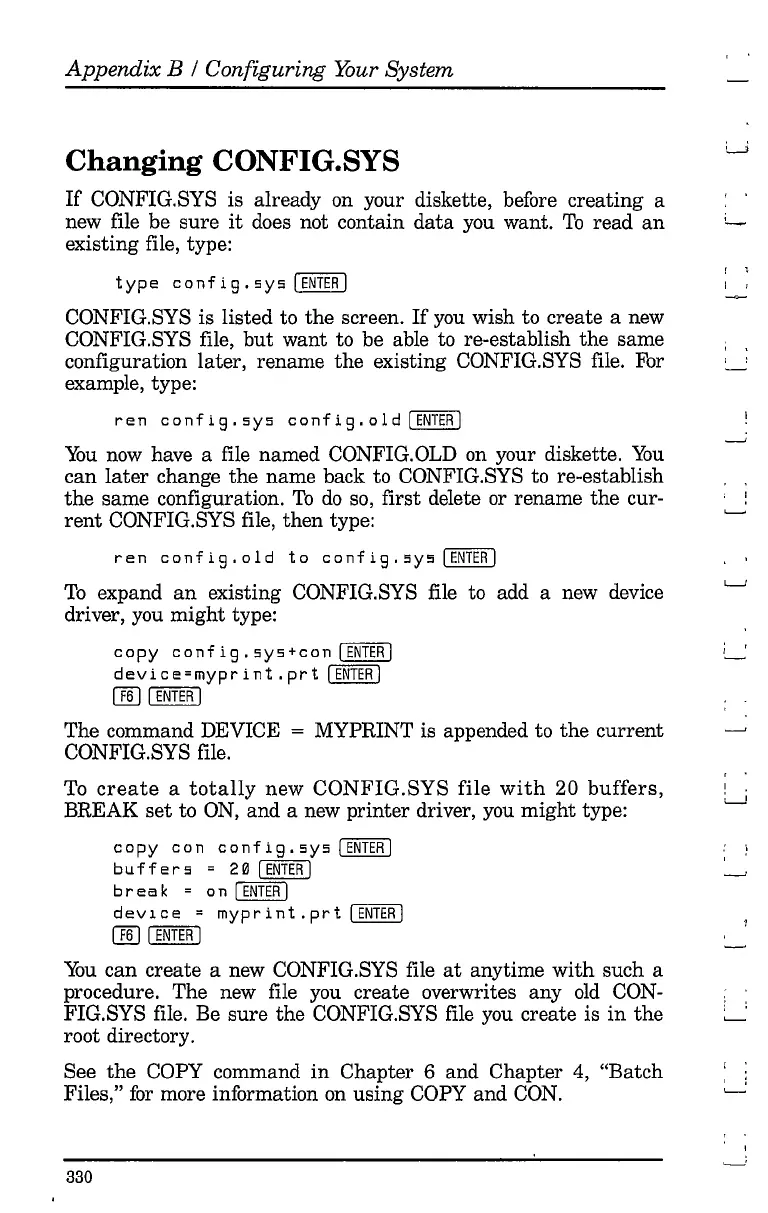Appendix B / Configuring
}Our
System
Changing
CONFIG.SYS
If
CONFIG.8YS is already on your diskette, before creating a
new file be sure
it
does not contain
data
you want.
To
read
an
existing file, type:
t y Pe
con
fig.
s Ys I
ENTER
I
CONFIG.SYS is listed to the screen.
If
you
wish to create a new
CONFIG.8YS file,
but
want to be able to re-establish the same
configuration later, rename the existing CONFIG.8YS file. For
example, type:
ren
config.sys
config.old
[ENTER
I
You
now
have a file named CONFIG.OLD
on
your diskette.
You
can
later
change the name back to CONFIG.SYS to re-establish
the
same configuration.
To
do
so, first delete or rename the cur-
rent
CONFIG.8YS file, then type:
r e
nco
n
fig.
old
t 0
con
fig.
s Ys I
ENTER
I
To
expand
an
existing CONFIG.8YS file to add a new device
driver, you
might
type:
cop
y
con
fig
. s Ys +
con
I
ENTER
I
device=myprint
.prt
I
ENTER
I
IT[]
I
ENTER
I
The command DEVICE = MYPRINT is appended to the current
CONFIG.SYS file.
To
create
a
totally
new CONFIG.SYS file
with
20
buffers,
BREAK
set
to
ON,
and a new printer driver,
you
might type:
cop
y
con
con
fig
. s Ys I
ENTER
I
buff
e r s = 2 0
[ENTER
I
b
rea
k = 0 n [
ENTER
I
devlce
=
myprint
.prt
I
ENTER
I
IT[]
I
ENTER
I
You
can create a new CONFIG.8YS file
at
anytime
with
such a
procedure. The new file
you
create overwrites any
old
CON-
FIG.SYS file. Be
sure
the CONFIG.8YS file
you
create is
in
the
root directory.
See
the
COPY command
in
Chapter 6 and Chapter
4,
"Batch
Files,"
for
more information
on
using
COPY
and
CON.
330
i I
! .
L......J
, .
I
'---"
